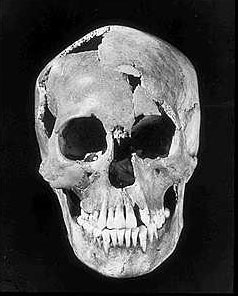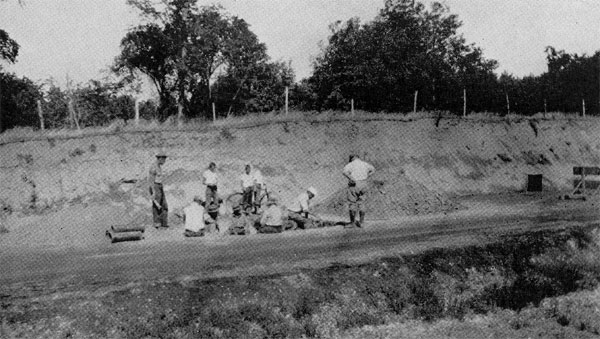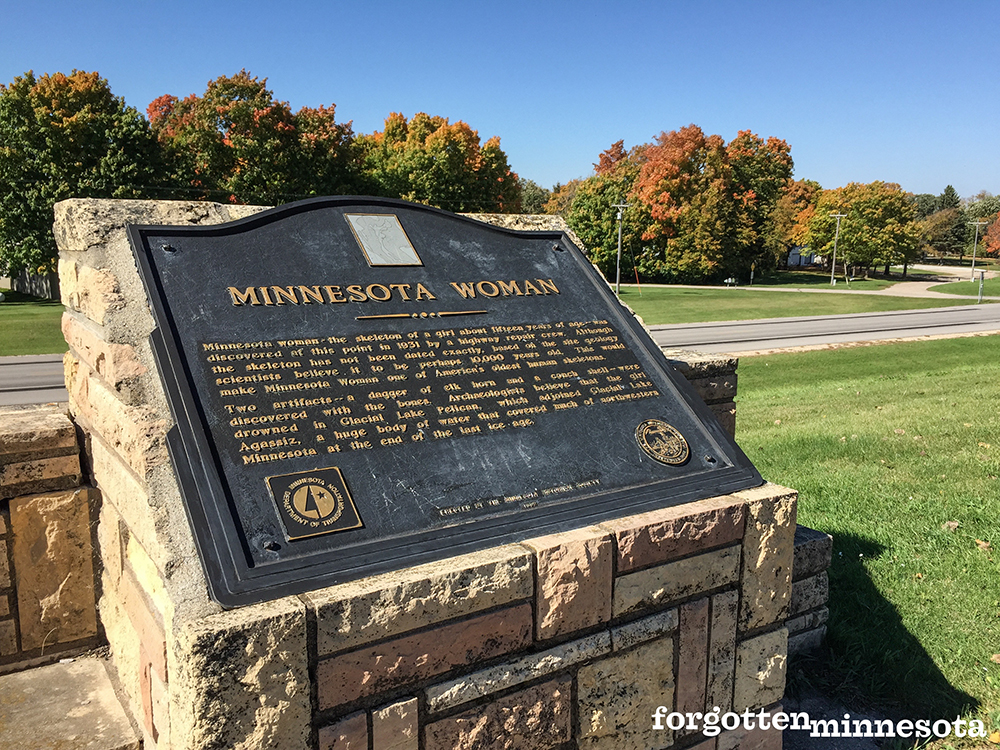Prehistoric Minnesota Woman
As construction workers were excavating a roadway along the eastern shore of Prairie Lake near Pelican Rapids in 1931, they uncovered one of the most exciting prehistoric finds in this region of North America—a human skeleton. The remains were found nine feet below the surface and encased in fine layers of clay which had once been the bottom of a lake that predated glacial Lake Agassiz. The state archaeologist was called in to exhume the bones and look for additional artifacts that would help identify and date the remains. At the time, the bones were determined to be those of a 15-year-old boy who died close to 20,000 years before. An unusual conch and elk antler knife were also found near the skeleton. For many scientists, the remains and artifacts were proof that prehistoric people inhabited this part of North America.
Soon after the completion of the roadway, a plaque was placed at the site where the remains were found. It said: “The remains of the Minnesota Man of the Pleistocene Age were found in this road cut on June 16, 1931.” In 1959, a wayside rest was established near the site, and a new marker was placed there by the Minnesota Historical Society.




Years later, scientists determined that the remains were actually those of a 15-year-old girl. They went on to speculate that more than 15,000 years ago, the girl had either broken through ice or fell off a boat and drowned in Glacial Lake Pelican. It was discovered that her body had been covered in thin layer of broken clam or mussel shells that were found in the mud and clay that encased her skeleton.This girl became known as the Minnesota Woman and is believed to be one of America’s oldest skeletons.
The wayside rest and historical marker remain on the east side of Highway 59 near the place where Minnesota Woman’s bones were found. In 1992, the text of the plaque was changed to reflect the fact that the remains were found to be those of a young woman, rather than a young man. The Friends of the Past website reports that Minnesota Woman’s remains were reburied by Dakota tribes in South Dakota on October 2, 1999.
